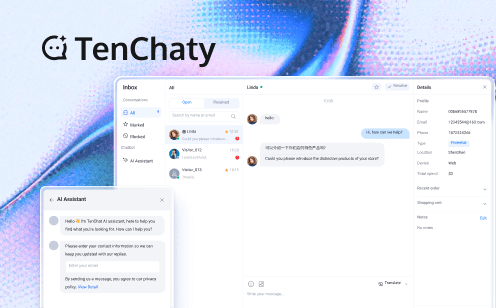Designing a Scalable Real Time Chat Application: Architectural Deep Dive and Backend Requirements

Designing a real time chat application demands absolute mastery of non-functional requirements (NFRs) like low latency, high availability (HA), and consistency. This architectural deep dive explains why horizontal scaling via microservices is mandatory for sustaining millions of concurrent users. It explores the critical role of message brokers like Kafka in managing high message throughput and guaranteeing data integrity, even during network instability. Furthermore, establishing multi-region infrastructure is essential for global resilience. Tencent RTC provides this entire battle-tested system—including robust load distribution and connection state recovery—allowing development teams to achieve world-class reliability instantly, ensuring an efficient and seamless user experience.
System Design Requirements: Consistency, Availability, and Scalability
A real-time messaging system is distinguished by its strict Non-Functional Requirements (NFRs). These include delivering messages in under 200 milliseconds (low latency), ensuring high availability (99.9% uptime), achieving massive scalability to support millions of concurrent connections, guaranteeing reliability (no message loss), and maintaining consistency (messages appear in the correct order across all devices).
For communication systems, especially those modeled after applications like Facebook Messenger or WhatsApp, the principle of Consistency is often prioritized over maximum availability during network partitions. This means ensuring message order is preserved and chat history remains identical across all user devices, sometimes at the expense of momentary unavailability. This architectural prioritization demands sophisticated server-side engineering to manage persistent connections and state across a distributed environment.
Choosing the Right Backend: Microservices, Message Queues, and Load Distribution
To support high throughput and massive scale, monolithic architectures are insufficient. Modern real-time applications must adopt a microservices architecture. This approach allows individual components (user service, chat service, presence service) to operate and scale independently, ensuring that traffic spikes in one area do not destabilize the entire system.
Critical to managing message flow is the implementation of message brokers (e.g., Apache Kafka or RabbitMQ). These systems decouple the sending client from the receiving client and ensure messages are queued and reliably delivered, even under heavy loads, maintaining a smooth data flow. Finally, load balancing is mandatory. By distributing incoming traffic across multiple chat servers, load balancers prevent any single server from becoming overwhelmed, thereby maintaining high availability and performance.
Engineering Reliability: Message Persistence and Multi-Region Strategies
System reliability is not just about avoiding crashes; it involves gracefully handling user disconnections, which are common, particularly on mobile networks. Best practices dictate mechanisms for seamless connection recovery. This includes persisting messages, tracking the last received message ID on the client side, and enforcing exponential backoff strategies for automatic reconnection attempts. This robust handling of connection state recovery is essential to ensure data integrity and prevent message loss.
For global scalability and disaster recovery (DR), the architecture must incorporate a multi-region setup. Building regional resiliency requires global ingress routing, sophisticated DNS management for failover, and data replication strategies across geographic regions. Implementing this complex infrastructure in-house is a massive engineering undertaking. Tencent RTC provides this highly distributed, fault-tolerant infrastructure as a service, offering developers the benefit of multi-region redundancy and reliability without the associated high operational complexity and expense.
Proposed Q&A
Q: Why are WebSockets preferred over REST for the core messaging functionality?
A: WebSockets provide a persistent, bidirectional, low-latency connection optimized for continuous data exchange, whereas REST is stateless and incurs high overhead unsuitable for real-time needs.
Q: How does a message broker like Kafka fit into a real-time chat architecture?
A: Message brokers manage high throughput, decoupling chat services and ensuring reliable, ordered delivery of messages even during heavy load, which is critical for system reliability.
Q: How can a developer ensure message ordering and delivery integrity (consistency)?
A: By leveraging architectures that prioritize consistency, such as event-driven systems with message brokers, and ensuring mechanisms are in place to preserve data integrity and enforce ordering at all times.
Q: What is the recovery process when a mobile client temporarily loses connectivity?
A: A robust system ensures disconnected clients automatically reconnect using mechanisms like exponential backoff, utilizing persisted message history to re-send messages and restore the correct conversation state.
Q: Does TRTC support horizontal scaling across geographically distributed servers?
A: Yes. TRTC’s infrastructure is designed for horizontal scaling across multi-region deployments, ensuring high availability and optimal performance globally while abstracting the complexities of distributed load management.


